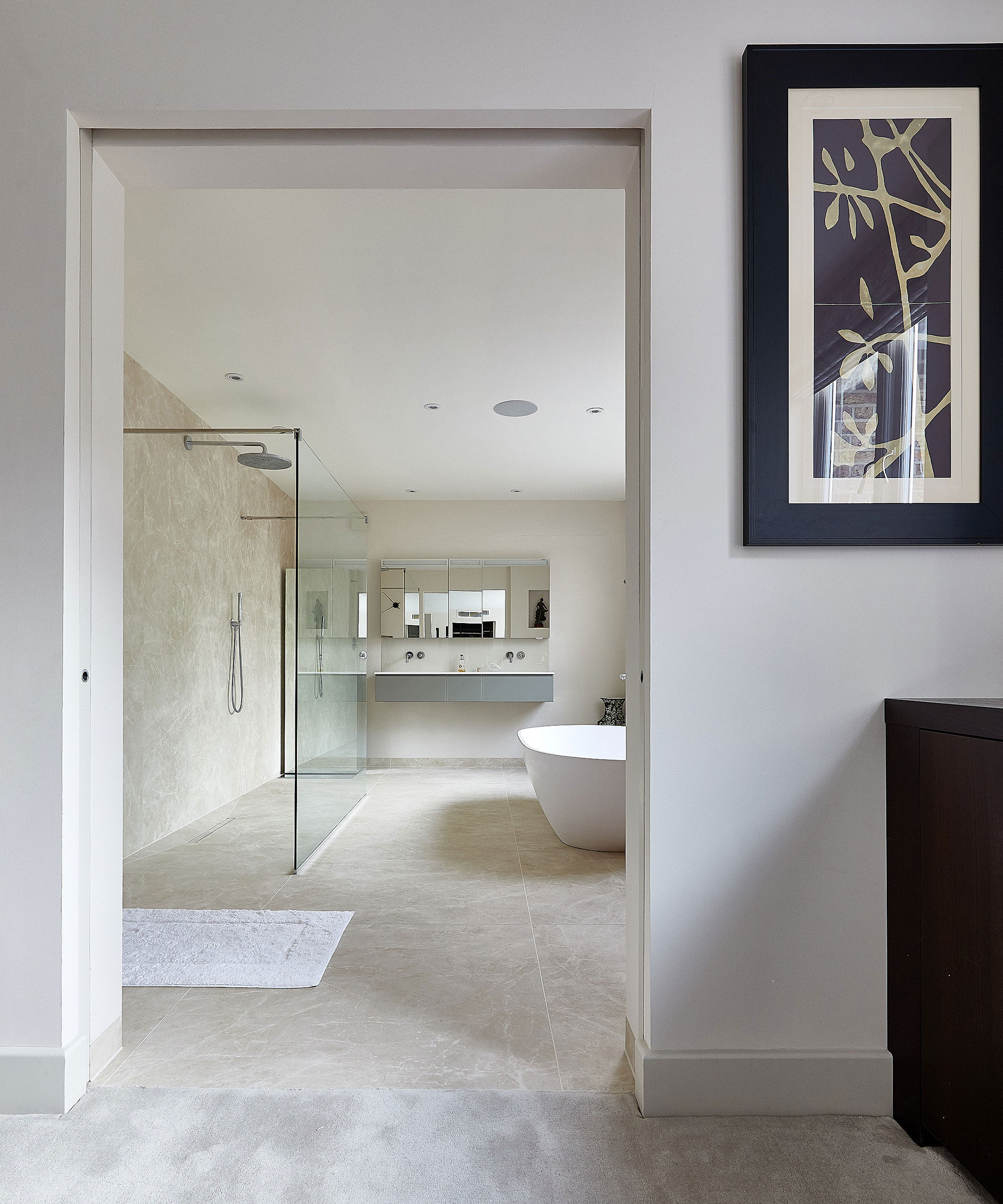How to clean a basement after flooding – 8 restorative steps
After a flood, these basement maintenance steps are essential to prevent extensive damage and health risks


Cleaning a basement after flooding is a challenging task, but prompt action and thorough cleaning can significantly reduce the impact on your home and help to restore your basement.
If you're worried about your basement flooding, utilizing cleaning tips to create a post-flooding plan is essential to ensure safety and prevent further damage to your space. From cleaning to disinfecting, organizing your basement after a flood is crucial to preserving your home.
Our cleaning and plumbing experts explained the eight essential steps to clean a basement after flooding to help restore it.
How to clean a basement after flooding
Always prioritize safety and hygiene and don't hesitate to seek professional help for assessments and repairs.
1. Ensure safety first

Floods can be dangerous, so before you start cleaning, make sure to prioritize your safety.
'Turn off electricity and gas before entering the basement to prevent accidents,' says Josh Mitchell, a plumbing technician and the owner of Plumbing Lab. 'Wear protective gear like gloves, boots, and a mask to shield yourself from harmful chemicals and contaminants in the water.'

Josh Mitchell is, a plumbing expert and HVAC technician and the owner of Air Conditioner Lab and Plumbing Lab.
2. Remove all flood water
'Make sure that any flood water is fully pumped out of the basement and that no more water is coming in,' advises Xohan Duran, managing director at Squires and Duran Plumbing and Heating Services. 'You may need professional water extraction or pumping services if there are large amounts of standing water. '
'You can use a sump pump or a wet-dry vacuum designed for water removal,' says Josh Mitchell. 'For smaller volumes of water, you might also use a mop and bucket. Either way, it's important to act quickly to prevent further water damage and reduce the risk of mold growth.'
Stanley SL18116 Wet/Dry Vacuum | Was $75.99, now $71.32 from Amazon
A quality wet/dry vacuum like this Stanley SL18116 is a brilliant investment if your home is at risk of flood damage.
3. Dry out the basement

Once the water is removed, it's time to dry out the basement.
'Set up dehumidifiers and fans to circulate air and reduce humidity to speed up the drying process,' advises Josh Mitchell. 'This process can take several days. Open windows if the humidity outside is lower than inside to aid in drying and monitor humidity levels to ensure the area is properly dried out.'
4. Clean and disinfect

'Once dry, clean all affected surfaces with a mixture of hot water and heavy-duty cleaner to remove dirt, debris, and harmful bacteria left behind by the floodwater,' advises Josh Mitchell.
'Then, disinfect with a solution of 1 cup of bleach to 1 gallon of water to kill any bacteria and mold spores. Be careful when using bleach and avoid mixing it with other cleaning agents.'
Start by cleaning walls and hard surfaces like concrete with the detergent mixture, rinse thoroughly and then allow all the surfaces to fully dry out.
'To remove any foul odors, wash down surfaces with vinegar, baking soda or disinfectants and clean and disinfect any tools, equipment or appliances that got wet,' says Xohan Duran.
5. Prevent mold growth

After cleaning and disinfecting, keep an eye out for any signs of mold growth. Mold can start to grow within 24-48 hours after flooding, and it can cause health issues or structural damage if left unaddressed. So, getting rid of mold in a basement is crucial.
You can use vinegar to kill mold or commercial mold killers, but if you spot any large fuzzy patches or black spots in your basement this may be toxic black mold and it's best to call a professional for proper removal.
You can also use mold inhibitors, such as Bioesque Protect 90 from Amazon to prevent future mold growth.
6. Remove damaged items

Next, remove anything that can't be salvaged from your basement, since these may have harmful contaminants and create an environment prone to mold.
Some items may be too damaged by water to save, including porous materials like carpet, upholstery, and certain types of insulation. These should be removed and disposed of properly to prevent mold and mildew. Contact your local waste management authority for guidance on proper disposal methods.
'Use a brush and a water-disinfectant solution to remove any mud, silt, mould and other contaminants,' advises Xohan Duran. 'Ensure to properly clean and air out items you wish to keep.'
7. Inspect and repair

'Once everything is clean and dry, inspect your basement for any structural damage to the walls, flooring, and foundation,' recommends Josh Mitchell. 'Electrical systems, plumbing, and heating/cooling systems should also be checked by professionals to ensure they are safe and functional.'
For issues and projects that you should not DIY, be sure to contact a professional water damage restoration company for consultation to find the best solution for your basement.
8. Document issues for insurance purposes
Finally, Josh Mitchell advises: 'Keep thorough documentation of the damage for insurance claims. Take photos or videos of the damage for insurance claims.
'Keep records of all repairs and expenses incurred during the cleanup process.'
To prevent future flooding, it's a good idea to seal cracks, improve your basement drainage, and/or install a sump pump if needed. You may also wish to consider installing a flood alarm system to give an early warning if water is likely to enter your property.
Sign up to the Homes & Gardens newsletter
Design expertise in your inbox – from inspiring decorating ideas and beautiful celebrity homes to practical gardening advice and shopping round-ups.

Lola Houlton is a news writer for Homes & Gardens. She has been writing content for Future PLC for the past six years, in particular Homes & Gardens, Real Homes and GardeningEtc. She writes on a broad range of subjects, including practical household advice, recipe articles, and product reviews, working closely with experts in their fields to cover everything from heating to home organization through to house plants. Lola is a graduate, who completed her degree in Psychology at the University of Sussex. She has also spent some time working at the BBC.
-
 Ina Garten's storage pantry is an insightful window into all of the best cookware used by the chef – and it's easy to recreate on your kitchen shelves from $48
Ina Garten's storage pantry is an insightful window into all of the best cookware used by the chef – and it's easy to recreate on your kitchen shelves from $48The beautiful dishware in The Barefoot Contessa's Hamptons pantry showcases the tools she uses most often to cook – this is exactly how you replicate it
By Sophie Edwards Published
-
 Extend the lifespan of your appliance with 5 simple but crucial washing machine maintenance tips
Extend the lifespan of your appliance with 5 simple but crucial washing machine maintenance tipsFrom cleaning the filters to keeping the door open, experts reveal the washer tips they swear by
By Andy van Terheyden Published
